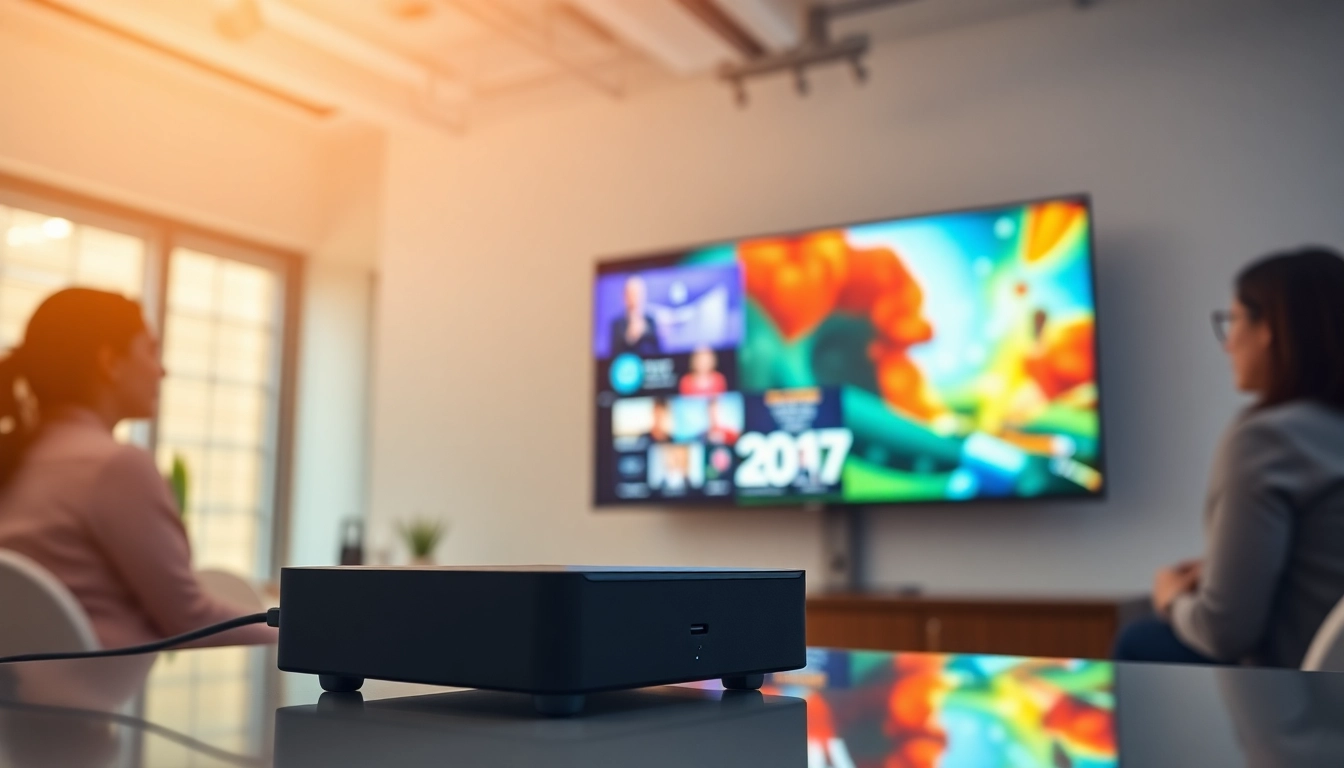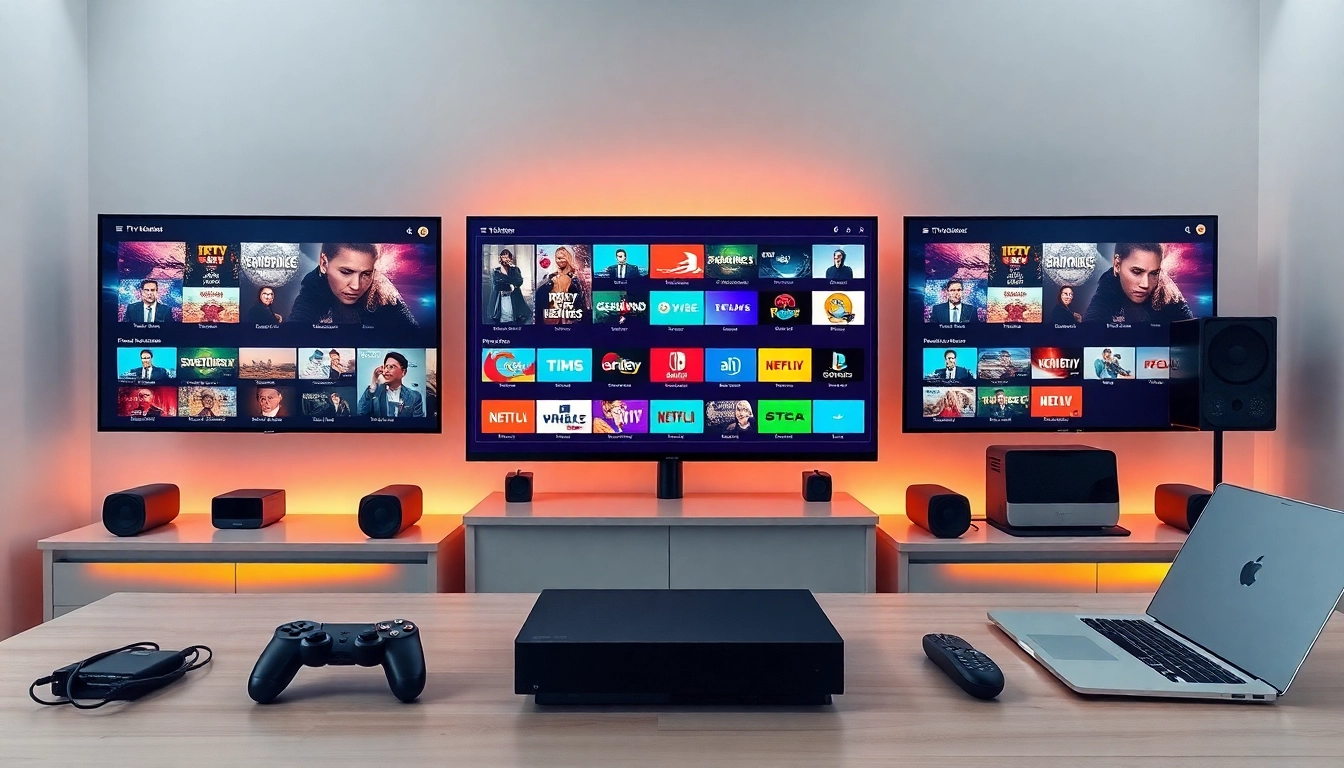Understanding the Android Digital Signage Player
What is an Android digital signage player?
An Android digital signage player is a hardware device that utilizes the Android operating system to display multimedia content on various screens. This technology turns ordinary display screens into impressive digital signage solutions that can display images, videos, and interactive content. By leveraging the power of Android, these players facilitate seamless integration with cloud-based content management systems and user-friendly software applications. The versatility of an Android digital signage player is significant, allowing it to be used in a variety of settings, including retail stores, educational institutions, corporate offices, and public spaces.
Key features of an Android digital signage player
Several key features define the effectiveness of an Android digital signage player:
- Ease of Use: User-friendly interfaces and drag-and-drop control systems make it accessible to people without technical expertise.
- Content Management: Powerful content management tools that allow users to create, schedule, and distribute digital signage content efficiently.
- Multi-format Support: Capability to display various types of content, including videos, images, HTML5, and live feeds.
- Remote Management: Ability to control and update content remotely via the cloud, enabling streamlined operations across multiple locations.
- Interactive Capabilities: Some players support touch functionality, making it possible to create interactive signage experiences.
How Android digital signage players work
At the core of an Android digital signage player is the Android operating system, which serves as the platform on which applications run. These players connect to the internet via Wi-Fi or Ethernet, allowing the device to access cloud-based software for content management. Users can upload content to a central server and schedule it for display on connected screens at specific times. The players can also link to databases and APIs, enabling dynamic content changes, such as showing live updates, news, or social media feeds.
Benefits of Using an Android Digital Signage Player
Cost-effectiveness and affordability
One of the most compelling reasons to choose an Android digital signage player is its cost-effectiveness. Compared to traditional signage solutions, which can require expensive hardware and ongoing maintenance, an Android player offers an affordable alternative. The initial investment is generally lower, and many Android players are available at competitive prices. Additionally, businesses can save on operating costs due to reduced energy consumption and the elimination of printing materials. As many players support remote and automated updates, ongoing management costs can be significantly minimized.
Flexibility and scalability in content management
Another significant benefit of Android digital signage players is their flexibility. Businesses can easily update content or alter their signage strategy without the need for hardware changes. Centralized content management allows for scalability; companies can start with a single device and expand to multiple displays as their needs grow. This adaptability means businesses can respond quickly to market dynamics, making it easier to implement targeted marketing campaigns or share relevant information in real time.
Enhancing audience engagement with interactive displays
Audience engagement is crucial in today’s competitive environment, and an Android digital signage player can significantly enhance viewer interaction. With the ability to incorporate touchscreens, businesses can create engaging experiences that encourage customers to interact with the content. For example, users might browse additional product information, sign up for newsletters, or enter contests directly on the screen. The combination of multimedia features and interactivity helps capture attention and improve retention rates, making the display a powerful marketing tool.
Choosing the Right Android Digital Signage Player
Factors to consider when selecting a player
When selecting an Android digital signage player, several factors come into play:
- Performance: Look for devices with sufficient processing power and memory to run complex applications smoothly.
- Connectivity: Ensure the player supports multiple connectivity options such as HDMI, USB, or Wi-Fi, based on your display needs.
- Compatibility: The player should be compatible with your existing displays and the content management software you plan to use.
- Durability: Consider the environment in which the player will be used; pick devices designed for reliability and long-term performance.
Top specifications to look for
In addition to the aforementioned factors, specific technical specifications are essential when evaluating an Android digital signage player:
- CPU and GPU specifications for optimal media playback.
- RAM size for multitasking and processing speed.
- Built-in storage capacity to handle local content caching.
- Compatibility with 4K and HD resolutions for high-quality visual output.
- Capacity for future software updates without requiring hardware refreshes.
Compatibility with various displays and software
Ensuring compatibility with your display hardware is paramount. Most Android digital signage players are designed to work with a wide array of display types, including standard monitors, digital signage screens, and televisions. Additionally, consider whether the player can integrate with various software options for content management, analytics, and interactive applications. The ability to work seamlessly with existing tools enhances the value of the digital signage solution.
Setting Up Your Android Digital Signage Player
Unboxing and initial setup process
Upon receiving your Android digital signage player, the first step is to unbox and inspect the contents. Ensure that all accessories, such as remote controls and power cables, are included. The initial setup typically involves connecting the player to a display using an HDMI cable, followed by connecting it to power. Many players come with straightforward instructions that guide you through the configuration process, helping ensure that the device is actively recognized by the display.
Connecting to Wi-Fi and screens
Connectivity is essential for optimal performance. Once the device is powered and connected to a display, you will need to configure the Wi-Fi settings. Access the device settings via the home screen, select the Wi-Fi option, and enter your network’s credentials. It’s essential to choose a stable and fast connection to ensure content updates and interactivity are seamless. For larger installations, consider hard-wiring the device via Ethernet for enhanced reliability.
Installing and configuring software applications
After the digital signage player is connected to the internet, users can install content management applications. These applications typically include user-friendly interfaces that allow you to upload, schedule, and manage your content easily. Once installed, conduct initial tests to ensure that the application runs smoothly on the player and that content displays correctly on the screen. Each software application may have specific configuration requirements, so following manufacturer guidance is crucial for setup success.
Best Practices for Using Android Digital Signage Players
Creating compelling content for your displays
The success of digital signage relies heavily on the quality of the content displayed. To create compelling content, prioritize high-resolution images and videos that are visually appealing and relevant to your audience. Use storytelling methods to convey messages effectively. A blend of graphics, text, and multimedia can enhance engagement and encourage viewers to take action. Ensure the content is updated regularly to keep it fresh and relevant to your audience.
Regularly updating and maintaining your digital signage
Maintenance is critical for any digital signage system. Schedule regular reviews of your content to identify outdated materials that need refreshing. Leveraging the remote management capabilities of the Android digital signage player simplifies this process, allowing you to push updates without needing to visit each physical location. Additionally, monitor system performance regularly, addressing technical issues promptly to minimize downtime.
Measuring effectiveness and audience response
To assess the effectiveness of your digital signage, collect and analyze audience engagement data. Use analytic tools that can track viewer interactions, content performance, and overall return on investment (ROI). Surveys and feedback mechanisms can provide valuable insights from viewers about what content resonates or could be improved. This data-driven approach helps optimize content strategies and improve future campaigns.



